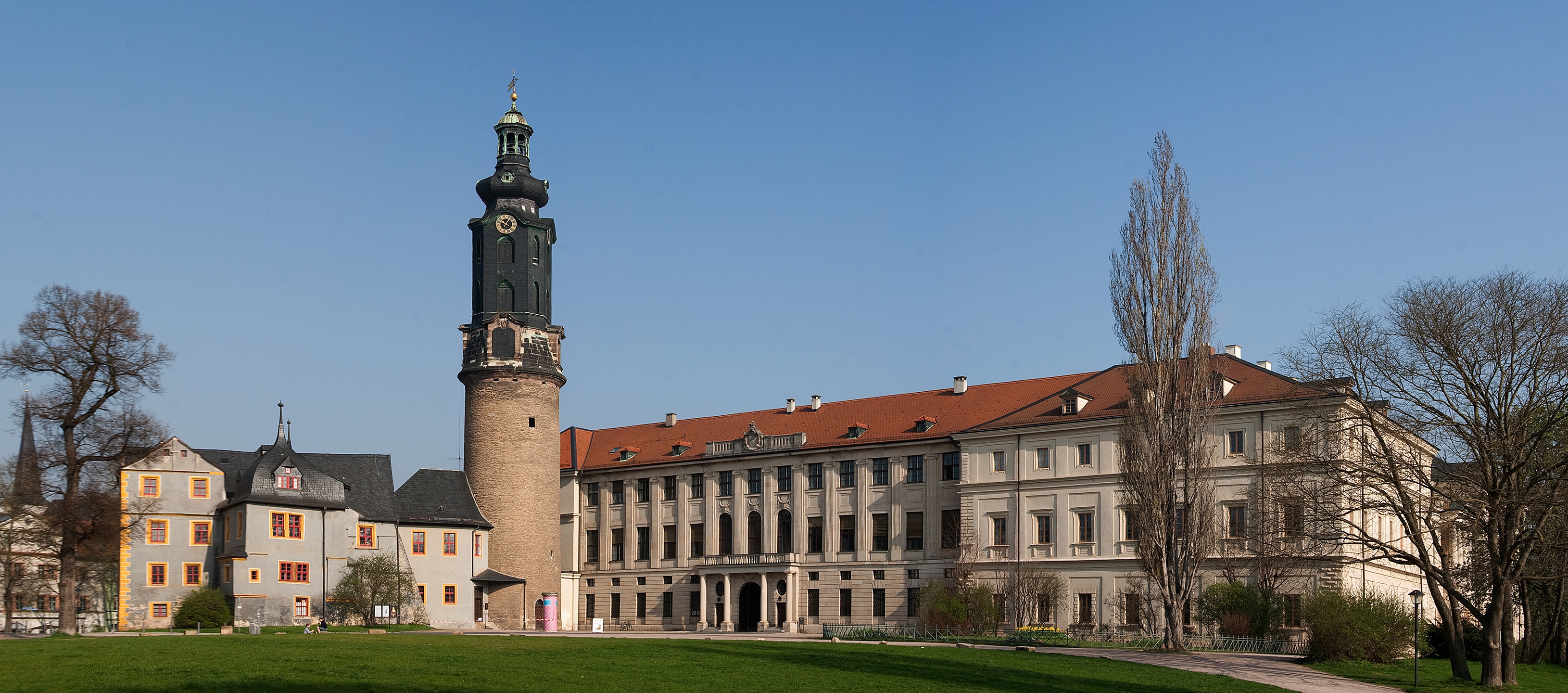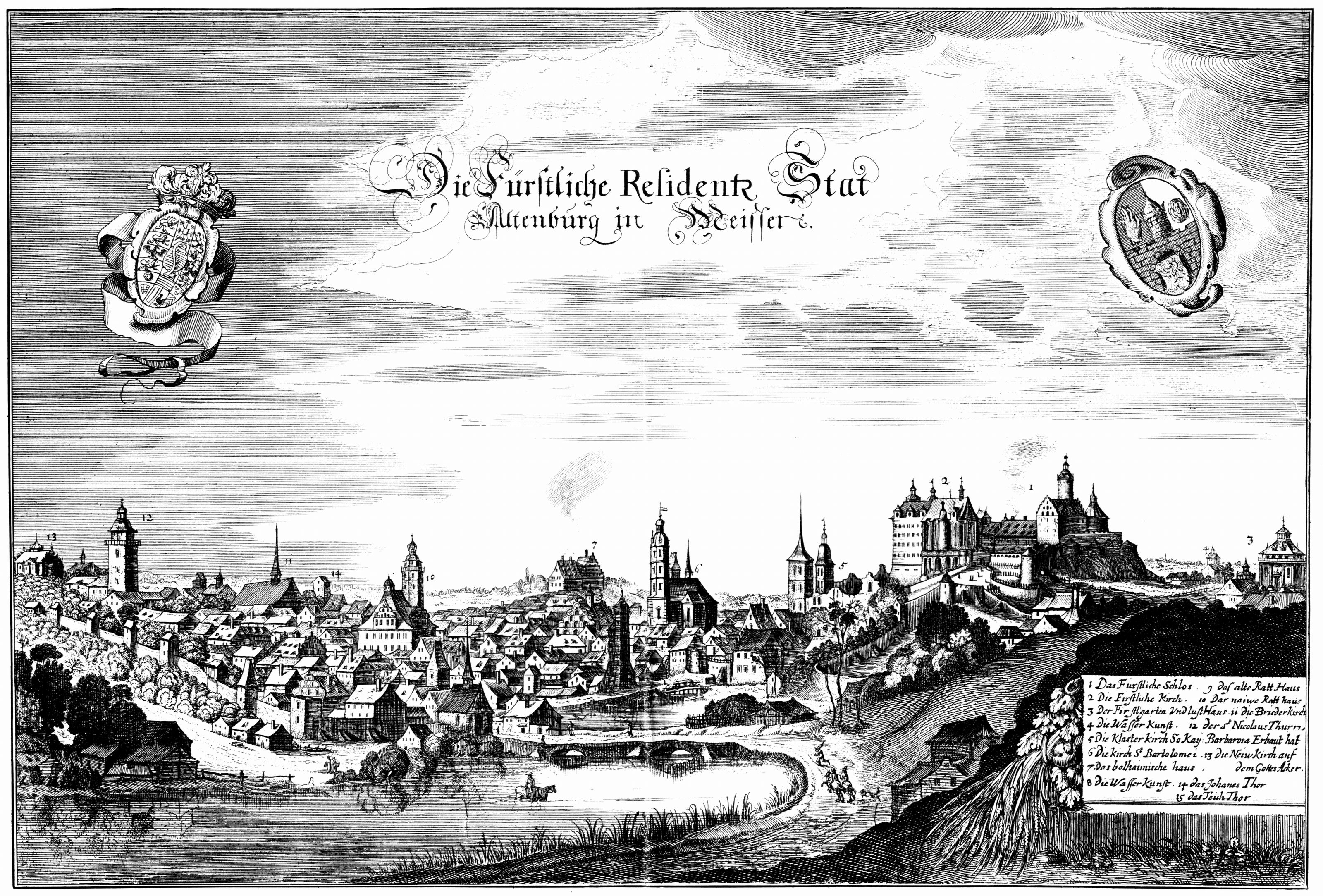|
Duke Of Gotha
Saxe-Gotha (german: Sachsen-Gotha) was one of the Saxon duchies held by the Ernestine branch of the Wettin dynasty in the former Landgraviate of Thuringia. The ducal residence was erected at Gotha. History The duchy was established in 1640, when Duke Wilhelm von Saxe-Weimar created a subdivision for his younger brother Ernest I the Pious. Duke Ernest took his residence at Gotha, where he had ''Schloss Friedenstein'' built between 1643 and 1654. At the same time, the Duchy of Saxe-Eisenach was created for the third brother Albert IV. Nevertheless, Albert died in 1644, and Ernest inherited large parts of his duchy, though not the core territory around the residence at Eisenach and the Wartburg, which fell to his elder brother Wilhelm of Saxe-Weimar. Ernest could also incorporate several remaining estates of the extinct House of Henneberg in 1660, which had been vacant since 1583. Finally in 1672 he received the major part of Saxe-Altenburg through his wife Elisabeth Sophie, af ... [...More Info...] [...Related Items...] OR: [Wikipedia] [Google] [Baidu] |
Saxe-Weimar
Saxe-Weimar (german: Sachsen-Weimar) was one of the Saxon duchies held by the Ernestine branch of the Wettin dynasty in present-day Thuringia. The chief town and capital was Weimar. The Weimar branch was the most genealogically senior extant branch of the House of Wettin. History Division of Leipzig In the late 15th century much of what is now Thuringia, including the area around Weimar, was held by the Wettin Electors of Saxony. According to the 1485 Treaty of Leipzig, the Wettin lands had been divided between Elector Ernest of Saxony and his younger brother Albert III, with the western lands in Thuringia together with the electoral dignity going to the Ernestine branch of the family. Ernest's grandson Elector John Frederick I of Saxony forfeited the electoral dignity in the 1547 Capitulation of Wittenberg, after he had joined the revolt of the Lutheran Schmalkaldic League against the Habsburg emperor Charles V, was defeated, captured and banned. Nevertheless, according ... [...More Info...] [...Related Items...] OR: [Wikipedia] [Google] [Baidu] |
House Of Henneberg
The House of Henneberg was a medieval German comital family (''Grafen'') which from the 11th century onwards held large territories in the Duchy of Franconia. Their county was raised to a princely county (''Gefürstete Grafschaft'') in 1310. Upon the extinction of the line in the late 16th century, most of the territory was inherited by the Saxon House of Wettin and subsequently incorporated into the Thuringian estates of its Ernestine branch. Origins The distant origins of this family are speculative yet seem to originate in the Middle Rhine Valley, east of modern-day France. Charibert, a nobleman in Neustria is the earliest recorded ancestor of the family, dating before 636. Five generations pass between Charibert and the next descendant of note, Robert III of Worms. Both the Capetian dynasty and the Elder House of Babenberg (Popponids) are direct male lineal descendants of Count Robert I and therefore referred to as Robertians. The designation ''Babenberger'', from the castl ... [...More Info...] [...Related Items...] OR: [Wikipedia] [Google] [Baidu] |
Saxe-Eisenberg
The Duchy of Saxe-Eisenberg was one of the Saxon Duchies held by the Ernestine line of the Wettin Dynasty. History Established in 1680 for Christian, fifth son of Ernest I, Duke of Saxe-Gotha, the Duchy consisted of Eisenberg and the towns of Ronneburg, Roda and Camburg. Upon his death in April 1707, as he had no male heirs, the lands were passed to Saxe-Hildburghausen. Dukes of Saxe-Eisenberg * Christian Christians () are people who follow or adhere to Christianity, a monotheistic Abrahamic religion based on the life and teachings of Jesus Christ. The words ''Christ'' and ''Christian'' derive from the Koine Greek title ''Christós'' (Χρι ... (1680–1707) References Citations Books * * {{Authority control 1680 establishments in the Holy Roman Empire 1707 disestablishments in the Holy Roman Empire States and territories established in 1680 Eisenberg ... [...More Info...] [...Related Items...] OR: [Wikipedia] [Google] [Baidu] |
Christian, Duke Of Saxe-Eisenberg
Christian of Saxe-Eisenberg (6 January 1653 – 28 April 1707) was a duke of Saxe-Eisenberg. He was born in Gotha, the eighth, but fifth surviving, son of Ernst I, Duke of Saxe-Coburg-Altenburg and Elisabeth Sophie of Saxe-Altenburg. Christian had traveled far in his youth and was interested early in History and Art. After the death of his father in 1675, he governed together with his brothers over Saxe-Gotha. He made Eisenberg his residence, where in 1677 he built the Schloss Christiansburg. After the divisionary treaty of the duchy in 1680, Christian retained Eisenberg and the towns of Ronneburg, Roda and Camburg. During his last years he was very interested in alchemy. He died in Eisenberg, with considerable debts, and, like his brothers Albrecht of Saxe-Coburg and Heinrich of Saxe-Römhild, without sons. His lands were disputed between his remaining brothers and their descendants in the "''Coburg-Eisenberg-Römhild inheritance dispute''", which took until 1735 to ... [...More Info...] [...Related Items...] OR: [Wikipedia] [Google] [Baidu] |
Saxe-Römhild
Saxe-Römhild (German: ''Sachsen-Römhild'') was an Ernestine duchy in the southern foothills of the Thuringian Forest. It existed for only 30 years, from 1680 to 1710. History After the Duke of Saxe-Gotha, Ernest the Pious, died on 26 March 1675 in Gotha, the Principality was divided on 24 February 1680 among his seven surviving sons. The lands of Saxe-Römhild went to the fourth son, who became Henry, Duke of Saxe-Römhild (1650–1710). The new Principality included the Districts of Römhild, Königsberg (which was later lost in 1683 to Saxe-Hildburghausen) and Themar, the winery of Behrungen, the monastery estate of Milz, and certain lands of the Echter family of Mespelbrunn that had been lost in 1665 to Saxony. But Duke Henry never had the full sovereignty of his new domains. The actual administration was left to the higher authorities in Gotha – the so-called ''Nexus Gothanus'' – because that was the residence of Henry's oldest brother, who ruled as Frederick I ... [...More Info...] [...Related Items...] OR: [Wikipedia] [Google] [Baidu] |
Saxe-Meiningen
Saxe-Meiningen (; german: Sachsen-Meiningen ) was one of the Saxon duchies held by the Ernestine line of the Wettin dynasty, located in the southwest of the present-day German state of Thuringia. Established in 1681, by partition of the Ernestine duchy of Saxe-Gotha among the seven sons of deceased Duke Ernst der Fromme (Ernest the Pious), the Saxe-Meiningen line of the House of Wettin lasted until the end of the German monarchies in 1918. History House of Wettin The Wettiner had been the rulers of sizeable holdings in today's states of Saxony, Saxony-Anhalt and Thuringia since the Middle Ages. In the '' Leipziger Teilung'' of 1485, the Wettiner were split into two branches named after their founding princes Albrecht and Ernst (''albertinisch'' and ''ernestinisch''). Thuringia was part of the Ernestine holdings of ''Kursachsen'' (the Electoral holdings of Saxony). In 1572, the branches Saxe-Coburg-Eisenach and Saxe-Weimar were established there. The senior line again split ... [...More Info...] [...Related Items...] OR: [Wikipedia] [Google] [Baidu] |
Bernhard I, Duke Of Saxe-Meiningen
Bernhard I, Duke of Saxe-Meiningen (Gotha, 10 September 1649 – Meiningen, 27 April 1706) was a duke of Saxe-Meiningen. He was the sixth but third surviving son of Ernst I, Duke of Saxe-Coburg-Altenburg and Elisabeth Sophie of Saxe-Altenburg. After the death of his father, in 1675, the duchy was jointly governed by him and his brothers; but the duchy was divided five years later (in 1680); as a result of this divisionary treaty, Bernhard received Meiningen, Wasungen, Salzungen, Untermassfeld, Frauenbreitungen and Ichtershausen. Bernhard became the founder of the Saxe-Meiningen line. The building of an official residence in Meiningen began immediately. The residence was finished in 1692 and was called Schloss Elisabethenburg, in honor of Bernhard's second wife. Like his brother Ernst, Bernhard's financial stability in his duchy was remarkable. The sales of chamber goods and the additional charge of taxes to the population were the result. Bernhard's will ordered the indivisi ... [...More Info...] [...Related Items...] OR: [Wikipedia] [Google] [Baidu] |
Saxe-Coburg
Saxe-Coburg (german: Sachsen-Coburg) was a duchy held by the Ernestine branch of the Wettin dynasty in today's Bavaria, Germany. History Ernestine Line When Henry IV, Count of Henneberg – Schleusingen, died in 1347, the possessions of the House of Henneberg – Schleusingen were divided between his widow, Jutta of Brandenburg-Salzwedel, and Henry's younger brother, John, and Jutta was given the so-called “''neues Herrschaft''” ("new lordship"), with Coburg among other properties. The death of Jutta six years later was followed by the division of the new ''Herrschaft'' amongst three of her daughters. The second daughter, Catherine of Henneberg, was awarded the southeastern part of the Coburgish land. After their wedding in 1346, Catherine's husband, Frederick III, the Margrave of Meissen from the House of Wettin, asked for his wife's dowry, the Coburgish land called the ''Pflege Coburg''; but his father-in-law resisted the devolution, and Frederick III could not touch ... [...More Info...] [...Related Items...] OR: [Wikipedia] [Google] [Baidu] |
Albert V, Duke Of Saxe-Coburg
Albert V (24 May 1648 – 6 August 1699) was a duke of Saxe-Coburg. He was the fifth but second surviving son of Ernst I, Duke of Saxe-Coburg-Altenburg (1601-1675), and Elisabeth Sophie of Saxe-Altenburg (1619-1680). He was born in Gotha. With his brother Bernhard, he attended the University of Tübingen from 1666, and later continued his studies in Geneva. He went on his Grand Tour with his brother Heinrich to Denmark, Sweden and the Netherlands. When his father died in 1675, Albert became ruler of the duchy of Saxe-Gotha-Altenburg along with all his brothers, and took Saalfeld as his residence. In 1680, after concluding a treaty of partition with his brothers, he received Coburg, to which he moved his residence. After his death without surviving sons in Coburg, his lands were disputed between his brothers, but Coburg was finally inherited by his youngest surviving brother, John Ernst. Family Albrecht married firstly in Gotha on 18 July 1676 Marie Elisabeth of Brunswi ... [...More Info...] [...Related Items...] OR: [Wikipedia] [Google] [Baidu] |
Altenburg
Altenburg () is a city in Thuringia, Germany, located south of Leipzig, west of Dresden and east of Erfurt. It is the capital of the Altenburger Land district and part of a polycentric old-industrial textile and metal production region between Gera, Zwickau and Chemnitz with more than 1 million inhabitants, while the city itself has a population of 33,000. Today, the city and its rural county is part of the Central German Metropolitan Region. Altenburg was first mentioned in 976 and later became one of the first German cities within former Slavic area, east of the Saale river (as part of the medieval Ostsiedlung movement). The emperor Frederick I, Holy Roman Emperor, Frederick Barbarossa visited Altenburg several times between 1165 and 1188, hence the town is named a Barbarossa city, Barbarossa town today. Since the 17th century, Altenburg was the residence of different House of Wettin, Ernestine duchies, of whom the Duchy of Saxe-Altenburg, Saxe-Altenburg persisted until th ... [...More Info...] [...Related Items...] OR: [Wikipedia] [Google] [Baidu] |
Frederick I, Duke Of Saxe-Gotha-Altenburg
Frederick may refer to: People * Frederick (given name), the name Nobility Anhalt-Harzgerode *Frederick, Prince of Anhalt-Harzgerode (1613–1670) Austria * Frederick I, Duke of Austria (Babenberg), Duke of Austria from 1195 to 1198 * Frederick II, Duke of Austria (1219–1246), last Duke of Austria from the Babenberg dynasty * Frederick the Fair (Frederick I of Austria (Habsburg), 1286–1330), Duke of Austria and King of the Romans Baden * Frederick I, Grand Duke of Baden (1826–1907), Grand Duke of Baden * Frederick II, Grand Duke of Baden (1857–1928), Grand Duke of Baden Bohemia * Frederick, Duke of Bohemia (died 1189), Duke of Olomouc and Bohemia Britain * Frederick, Prince of Wales (1707–1751), eldest son of King George II of Great Britain Brandenburg/Prussia * Frederick I, Elector of Brandenburg (1371–1440), also known as Frederick VI, Burgrave of Nuremberg * Frederick II, Elector of Brandenburg (1413–1470), Margrave of Brandenburg * Frederick William, Elect ... [...More Info...] [...Related Items...] OR: [Wikipedia] [Google] [Baidu] |



